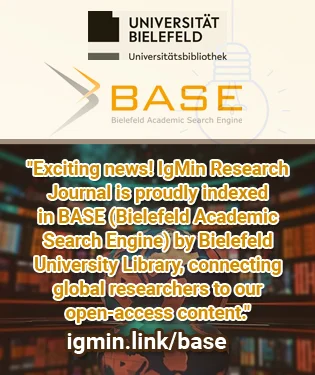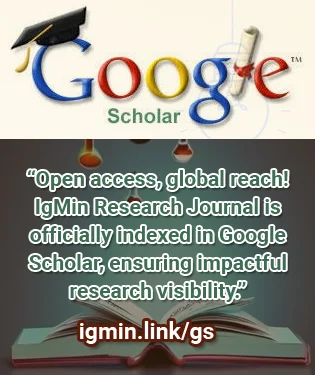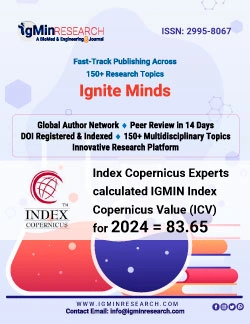Abstract
Integrating artificial intelligence (AI) and additive manufacturing (AM) has significantly transformed the design and fabrication of bone scaffolds, offering remarkable potential for advancing regenerative medicine and sustainable healthcare solutions. This paper examines how AI-driven generative design and predictive modeling enable the creation of customized bone scaffolds with superior mechanical properties, optimized porosity, and enhanced biocompatibility explicitly tailored to individual patient needs. Additive manufacturing complements these advancements by providing precise, waste-minimizing fabrication methods, while AI further supports the process through defect detection, optimization, and strategic material selection.
Recent innovations in innovative biomaterials, IoT-enabled implants, and closed-loop manufacturing systems have further amplified the effectiveness and sustainability of these scaffolds. The review emphasizes how the convergence of AI and AM technologies can substantially reduce production costs, enhance accessibility in resource-limited areas, and address pressing global healthcare challenges, as illustrated in Figure 1, which maps the primary challenges and technological advancements in scaffold design. Despite existing hurdles, including the high initial costs and environmental concerns associated with energy-intensive AI model training, these barriers can be mitigated through collaborative interdisciplinary research and innovation.
This review highlights the profound potential of integrating AI and additive manufacturing in bone tissue engineering, underscoring their ability to provide scalable, personalized healthcare solutions aligned with global sustainability goals. Continued research, enhanced cross-disciplinary partnerships, and supportive policies are essential to realize and broadly disseminate these technological advancements.




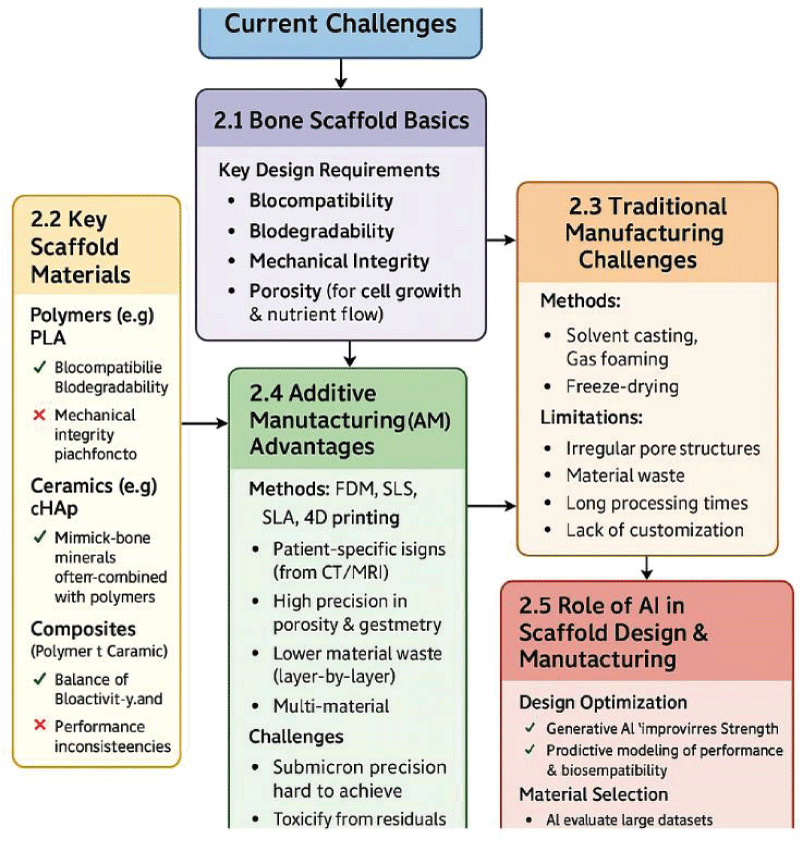
![Conceptual map of current challenges in scaffold design and production, including material, biological, and technological barriers. Adapted from [19,25-29,61-68]](https://www.igminresearch.com/articles/figures/igmin316/igmin316.g002.png)
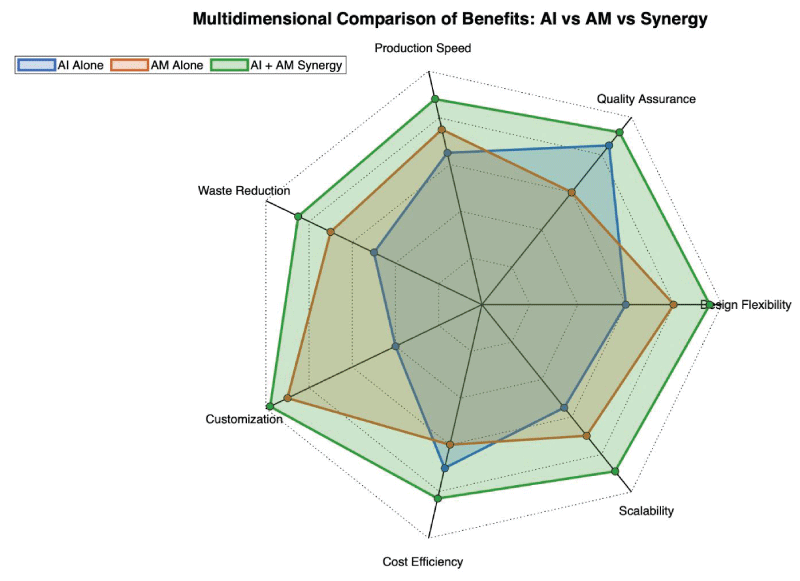
![Framework demonstrating how AI and AM can be integrated for clinical applications of bone scaffolds. Patient-specific imaging data flow into AI-driven design, which is then fabricated by AM and validated in vivo. Adapted from [80-85].](https://www.igminresearch.com/articles/figures/igmin316/igmin316.g004.png)
![Parallel coordinates plot visualizing overlapping and unique challenges in AI, AM, and their combined use, including sustainability, equity, and scalability concerns [90-98].](https://www.igminresearch.com/articles/figures/igmin316/igmin316.g005.png)
